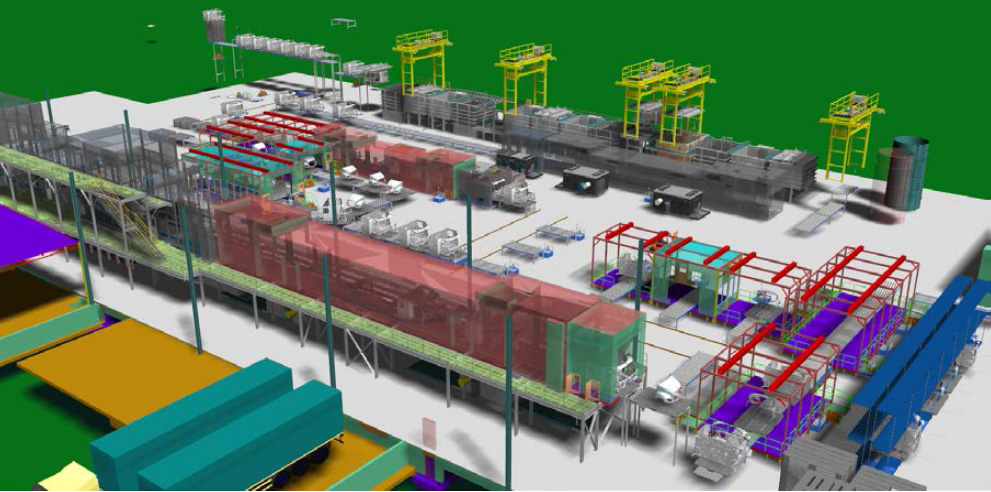
The Power of 3D Modeling in Manufacturing
April 23, 2025Design Systems Canada (DSC), a seasoned engineering consulting firm established in 1990 in Windsor, Ontario, with a strong presence serving the Canadian manufacturing sector, understands the transformative power of technology in modern industry.
Among these advancements, 3D modeling stands out as a pivotal tool reshaping how products are conceived, developed, and produced. This article explores the multifaceted roles and significant advantages that 3D modeling brings to every stage of the manufacturing lifecycle.
Conceptualization and Design with 3D Modeling
The journey of any manufactured product begins with an idea. 3D modeling acts as the bridge between abstract concepts and tangible digital representations. Instead of relying solely on sketches or 2D drawings, engineers and designers can construct intricate three-dimensional models that accurately depict the final product.
This early visualization allows for a more intuitive understanding of form, fit, and function.
Different design iterations can be explored rapidly.
Modifications can be made with greater ease and precision.
3D models facilitate the creation of detailed product specifications and documentation, ensuring clarity from the outset.
 Enhancing Communication and Collaboration through 3D Visualization
Enhancing Communication and Collaboration through 3D Visualization
In the complex world of manufacturing, effective communication is paramount. 3D models provide a universal visual language that transcends the technical jargon often associated with engineering. They enable seamless collaboration among diverse teams, including engineers, industrial designers, clients, and even marketing personnel.
A 3D model offers enhanced clarity compared to traditional 2D representations.
This minimizes the potential for misinterpretations and costly errors.
Virtual design reviews, facilitated by 3D models, allow stakeholders to provide feedback early.
The ability to visualize complex assemblies and spatial relationships in three dimensions significantly improves understanding and facilitates more informed decision-making.
Streamlining Prototyping and Tooling Design with 3D Data
The transition from design to physical reality often involves prototyping and the creation of specialized tooling. 3D modeling plays a crucial role in streamlining these critical phases.
Precise digital data from 3D modeling directly drives rapid prototyping technologies like 3D printing.
This allows for quick and cost-effective creation of physical prototypes for testing and validation.
3D models serve as blueprints for designing accurate and efficient tooling (molds, dies, fixtures).
Leveraging 3D data helps identify and address potential manufacturing challenges during tooling design, reducing rework and optimizing production.
Applications of 3D Modeling extend to ensuring the accuracy and functionality of these essential manufacturing components.
 Optimizing Manufacturing Processes with 3D Simulation
Optimizing Manufacturing Processes with 3D Simulation
Beyond design and prototyping, 3D models are increasingly being used to optimize the manufacturing processes themselves.
Manufacturing simulation software utilizes 3D models of equipment, workstations, and facilities to analyze and improve production workflows.
Simulating assembly processes, material flow, and ergonomic factors in a virtual 3D environment helps identify bottlenecks and inefficiencies.
This also helps address safety concerns before physical implementation.
This capability extends to the virtual commissioning of new equipment and processes, allowing for testing and optimization safely and cost-effectively, leading to smoother operations.
Real-World Applications of 3D Modeling in Manufacturing
The impact of 3D modeling is evident across various manufacturing sectors relevant to the expertise of firms like DSC.
Automotive Industry: Used extensively for vehicle design, component development, and assembly line planning.
Aerospace Sector: Relies on 3D modeling for intricate design and analysis of aircraft structures and systems.
Consumer Goods: Utilized to create aesthetically appealing and functional products.
Warehousing and Logistics: Aids in optimizing facility layouts and material handling systems.
For manufacturers in Ontario Manufacturing and across manufacturing in Canada, embracing 3D modeling offers a significant competitive advantage by enabling faster product development, improved quality, and enhanced efficiency.
The Future of 3D Modeling in Canadian Manufacturing
The field of 3D modeling continues to evolve rapidly, with emerging trends promising even greater impact on manufacturing.
Integration with other Industry 4.0 technologies like virtual reality (VR) and augmented reality (AR) creates new possibilities for design visualization, training, and remote collaboration.
As Canadian manufacturing embraces digital transformation, 3D modeling will remain a cornerstone for driving innovation, improving productivity, and maintaining global competitiveness.
Conclusion
From the initial spark of an idea to the final manufactured product, 3D modeling offers profound benefits at every stage of the manufacturing journey. It enhances communication, streamlines development processes, and optimizes production.
At Design Systems Canada, we understand the power of 3D modeling and are committed to leveraging its capabilities to provide cutting-edge engineering solutions for manufacturers in Ontario and beyond.
We invite you to contact us today to explore how our expertise in 3D modeling can help bring your manufacturing visions to life.